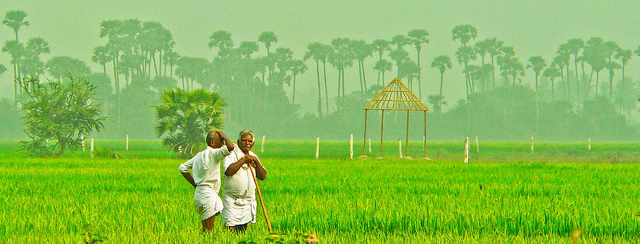How Many Farmers Does India Really Have ?
(This article has been updated to reflect additional information)
It’s a bit of a mystery question. Reason is most data tells you that more than half of India’s population lives on or off agriculture. But does it really ?
The World Trade Organization General Council which met on July 24-25 failed to arrive at a consensus on the Doha Round talks thanks to India’s position on agriculture subsidies. Needless to add, this has once again put the spotlight on India’s large farming populace. And thus some curiosity on how many farmers there really are.
Now Census 2011 says there are 118.9 million cultivators across the country or 24.6% of the total workforce of over 481 million. The table below shows the number and percentage of cultivators, according to Census, since 1951 to 2011.
It can be seen from the table above that although the number of cultivators has been fluctuating, the percentage of cultivators has been coming down steadily. It has declined from nearly 50% in 1951 to 24% in 2011, which means the number of farmers has come down by half.
Let us now look at another set of numbers:
Number of Rural-Urban Cultivators, 2001 & 2011

Source Census (Figures in%)
From the table above, it is clear that total cultivators in rural areas have declined from 40% in 2001 to 33% in 2011. Gender-wise, females have moved away more sharply than their male counterparts from being cultivators. Their percentage has fallen from 37% in 2001 to 29% in 2011.
Lets get two views in. Journalist P.Sainath says there are 95.8 million cultivators for whom farming is their main occupation, which is less than 8% of the population. Devendra Sharma, agricultural researcher and policy commentator told us that “unlike the US, in India when the family owns a piece of land everyone works on the farm. So if we make a rough calculation of say 90 million households engaged in agriculture and multiply it with 5 (the average Indian family size) the number you get pretty much is equivalent to 53%”
Let us now try and look at the data of agriculture labourers, according to Census 2011. Very often, agricultural labourers are added with cultivators to calculate the number of farmers. This is not the case with the Census, which defines agriculture labour: ‘A person who works on another person's land for wages in money or kind or share is regarded as an agricultural labourer. She or he has no risk in the cultivation, but merely works on another person's land for wages. An agricultural labourer has no right of lease or contract on land on which she/he works.”
The following table shows the number of agricultural labourers from 1951 to 2011.
We can see from the table above that the number of people working as agricultural labourers has been increasing since 1951. And the percentage of agricultural labourers has increased from 19% in 1951 to 30% in 2011.
This shows that quite a few people have actually moved from being cultivators to being agricultural labourers. During the decade 2001-11, the Census results show a fall of about 9 million in cultivators and an increase of about 38 million in agricultural labourers!
So, if we add the number of cultivators and agricultural labourers, it would be around 263 million or 22% of the population (1.2 billion). Then where does the common perception of 53% of population being involved in agriculture come from? It needs to be remembered that over 600 million Indians dependent on agriculture are not farmers. They are deployed in an array of related activities including fisheries. And this confusion is widespread and innocent!!!
Update 11th August,2014:
P.Sainath responded to us. According to him, the census data on agricultural workers is further broken down according to main and marginal workers. The following table shows precisely this information on workers whose main and marginal occupation is cultivators.
| Category | Person | Male | Female | |
| Main work | ||||
| Rural | 92.7 |
| 22.2 | |
| Urban | 3.1 |
| 0.5 | |
| Total | 95.8 | 73.0 | 22.8 | |
| Marginal work | ||||
| Rural | 22.2 | 9.3 | 12.8 | |
| Urban | 0.6 | 0.3 | 0.3 | |
| Total | 22.8 | 9.6 | 13.1 | |
Source: Census 2011 (figs in million)
(Image Credit: Flickr)



